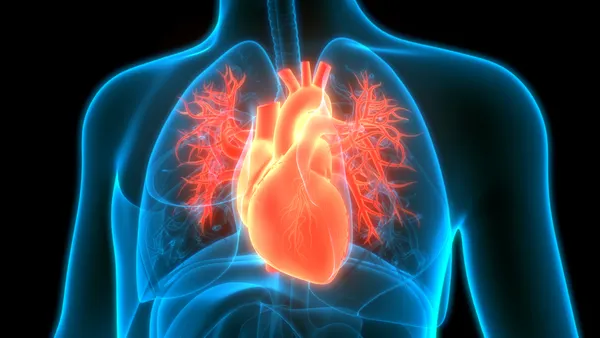Dive Brief:
- A soft, flexible graphene “tattoo” has detected irregular heart rhythms and delivered electrical stimulation to the hearts of rodents.
- Writing in the journal Advanced Materials, researchers at Northwestern University describe the creation of an implant that is thinner than a strand of hair and works like a classical pacemaker.
- The material can mold to the heart, unlike the more rigid implants on the market today, but improvements are needed to equip the device for long-term implantation in humans.
Dive Insight:
Abbott and Medtronic have created leadless pacemakers to solve problems associated with traditional devices such as fracturing, insulation defects and infection. However, leadless pacemakers have their own problems, as outlined in a U.S. Food and Drug Administration notice in 2021, and complications can arise whenever rigid medical devices interface with soft tissues.
"One of the challenges for current pacemakers and defibrillators is that they are difficult to affix onto the surface of the heart. Defibrillator electrodes, for example, are essentially coils made of very thick wires. These wires are not flexible, and they break. Rigid interfaces with soft tissues, like the heart, can cause various complications,” Northwestern's Igor Efimov, the study's senior author, said in a statement.
Recognizing that, researchers have worked to apply graphene, a single layer of carbon atoms with good properties for bioelectronics, to the development of flexible medical devices. The latest paper advances the field by describing the application of a flexible, graphene-based device to cardiac biology in vivo.
Efimov and his partners fabricated graphene electronic tattoos and placed them on the hearts of rats. The GETs sensed the beating of the heart in vivo and delivered electrical stimulation to correct any irregularities in the rhythm.
Electrochemical measurements taken by the device remained consistent for 60 days on an actively beating heart at body temperature, leading the researchers to suggest it could be used for temporary cardiac sensing and pacing applications such as a bridge to permanent pacemakers in children. The team said additional glue or adhesive will be needed to create implants for chronic applications.
Targeting longer-term applications will create further challenges, such as the potential for tissue to grow over the devices. The researchers expect “little to no toxicity from the substrate-supported graphene” but nonetheless said in the paper that additional anti-inflammatory coatings “would be helpful.”













